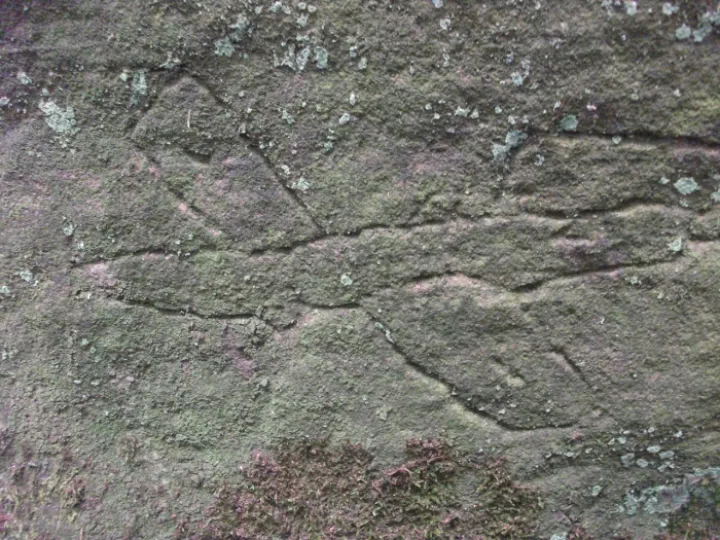V1 Flying Bomb over the Ridge 1944
Any Kelsall resident who was awake early on Christmas Eve 1944 could be forgiven for thinking that a misfiring motorbike was passing through the village on its way to Chester. However, the loud explosion, shockwave and (for some) shattered windows that followed moments later would rapidly dispel such a notion.
At 6:22 am on 24 December 1944, Kelsall acquired the dubious distinction of becoming the westernmost V1 flying bomb impact site in England. The Luftwaffe's veteran Kampfgeschwader (KG) 53 'Legion Condor' had left its distinct wartime mark on the parish, despite their intended target lying some 30 miles to the north east.
Residents of the north west who hadn't seen public information films at the cinema or who hadn't relocated from the south east would be unfamiliar with the sinister sound of a V1's pulse jet motor. After all, the V1 attacks on the Greater London area had largely originated from northern Europe, and 6 months after D-Day the launching sites had been steadily pushed further out of range by the Allied advance towards Germany. Surely a V1 couldn't possibly reach Cheshire?
The reason behind Kelsall's doodlebug detonation was the Luftwaffe's KG53 'Condor Legion' who developed and adapted Heinkel III bombers to air launch V1 missiles from over the North Sea, in an effort to outflank Britain's south eastern air defences and bring destruction to our industrial north.
Between 5am and 6am on the morning of Christmas Eve 1944, around 50 KG53 Heinkel's flew over the North Sea near Hull and each of them released a V1 in the direction of Manchester. A small number failed to start up and fell straight into the sea, and none of them spent more than half an hour in the air, such was their speed. They were extremely difficult to either intercept or shoot down, and our northern air defences were not properly geared up to tackling the V1 threat.
Only one of these V1s actually landed within the Manchester Special Civil Defence Area, causing severe damage to a field of seasonal Brussels Sprouts beside the River Mersey near Stockport. They actually came down all over the place, with one arriving in County Durham whilst others fell as far afield as Northamptonshire and Shropshire. Online speculation in 2007 suggested another might have landed intact in a Flintshire wood and its wreckage was taken away in secret for analysis, but such is the nature of online speculation that it remains unverified. It is fair to say, however, that V1 impacts were not widely reported, as any indication of their accuracy (or otherwise) would be of help to our wartime enemy.
In fact a number of V1 flying bombs, including the Kelsall doodlebug, carried an insidious system of accuracy feedback in the form of a canister of documents. This canister was rigged to eject from a tube near the bomb's tail at the moment its pulse jet motor cut out before the final groundward plunge. The canister's contents would then scatter over the locality, to be picked up by curious local residents. Some of the paperwork was just propaganda, for example miniaturised issues of Signal magazine, but another item found at Kelsall was the V1 POW Post. This sheet included a facsimile letter supposedly from a POW held in Germany. The finder was requested to forward the letter to the POW's family in England, who would probably mention it in their next contact with their loved one via the Red Cross. This would be intercepted by Intelligence officers at the POW camp, and the location of the V1's impact could be deduced from the paper trail. Certainly long-winded, but cunning nonetheless. Consequently the Police were under orders to collect up any fallen literature near V1 impact sites, and to warn people away from it.
The Kelsall V1 left a crater measuring some 20 feet across and 10 feet deep in the vicinity of Street Farm and Lower Street Farm, situated alongside the A54 to Chester. Around the late 1980s a Kelsall resident named only as Mr Booth gave an eyewitness account of the V1 event from his time spent working at Street Farm during WW2. His story is retold in Peter J C Smith's meticulously researched 1988 account of the Manchester V1 raid entitled Flying Bombs Over The Pennines (ISBN 1 85216 029 2), which is sadly out of print but is still available second hand. Much of the information for this article is drawn from Smith's work.
Smith states (p38) "Mr Booth, still resident in Kelsall village, was at the time employed at Street Farm and had just arrived for work. He was in the shippon (cattle shed) with the farmer's son, Robert Tomlinson, and the farm foreman. They heard a sound coming from the east of Kelsall Hill. Looking out of the shippon door, the foreman saw the V1 and said it was a plane on fire. The sound stopped and Robert Tomlinson suddenly realised that it could be a flying bomb. He called to the others to get down, and just as they did so it went off. The straw and 'dust' from the shippon floor thrown up by the concussion 'seemed to come up to meet them'. There were no casualties but some damage was done to the roofs of the Street Farm buildings and one roof truss was broken. Many slates were taken off local roofs and windows were shattered. Leaflets were scattered over the area of the field and many were taken away as souvenirs, particularly by locally based American soldiers. Some of the larger remnants of the bomb were later dumped into a pond surrounded by a spinney at the edge of the field."
Given that the blast wave from a V1 could shatter windows at least a mile from its impact site, Mr Booth and his co-workers were lucky to escape uninjured. Others were not so fortunate, with tragic deaths and serious injuries recorded across the region and beyond following the Christmas Eve V1 raid.
Further comments about the raid can be found online at the aircrashsites.co.uk website, including this one posted in February 2020: "I was brought up in Kelsall, my late father obviously heard that one go over and go bang. He cycled down there and retrieved a propaganda leaflet, which I still have. I think it killed a few cows and flattened some nearby farm greenhouses." Similarly the son of a WW2 US serviceman commented in 2016: "I'm the historian for my father's WWII unit. They were at Delamere Park Camp when the V-1 heading for Kelsall went over. It left such an impression on them that they even marked it on the battalion map."
During SRT's field research for the Ridge: Rocks and Springs project we recorded some graffiti in the shape of aircraft carved near the Kelsborrow seats above Willington. Whilst one has a cockpit and bears a passing resemblance to a Hawker Hurricane, the other has a sharp nose and no cockpit, with an enigmatic line in roughly the same position as a V1's pulse jet motor. Could this be somebody's informal record of the events of Christmas Eve 1944?
Whether the indiscriminate inaccuracy of the V1 flying bomb was caused by rudimentary design, defective components, hurried launching or deliberate sabotage by the slave workers who were forced to build them, we will probably never know. That the Kelsall V1 travelled so far beyond Manchester at least suggests that a fault in its guidance system led it to overshoot its target, run out of fuel, fall from the sky and leave its own unique and unwelcome 'Footprint on the Ridge'.
Sources:
Flying Bombs Over The Pennines (ISBN 1 85216 029 2) Peter J C Smith (1988)
For online discussion of the raid, including a map of the impact site see:
https://aircrashsites.co.uk/air-raids-bomb-sites/a3/
Battalion map of the US 284th Combat Engineers noting the impact site:
https://284thcombatengineers.com/documents.cfm#gallery-103
For 2007 speculation about a possible Flintshire impact see:
http://forum.12oclockhigh.net/showthread.php?t=8393
Our thanks to Dave Trevor for this fascinating article.
We have also included this article in our 'Footprints on the Ridge' section of the Website – CLICK HERE.

Sandstone Ridge Trust
Registered Company No. 7673603
Registered Charity No. 1144470
info@sandstoneridge.org.uk

